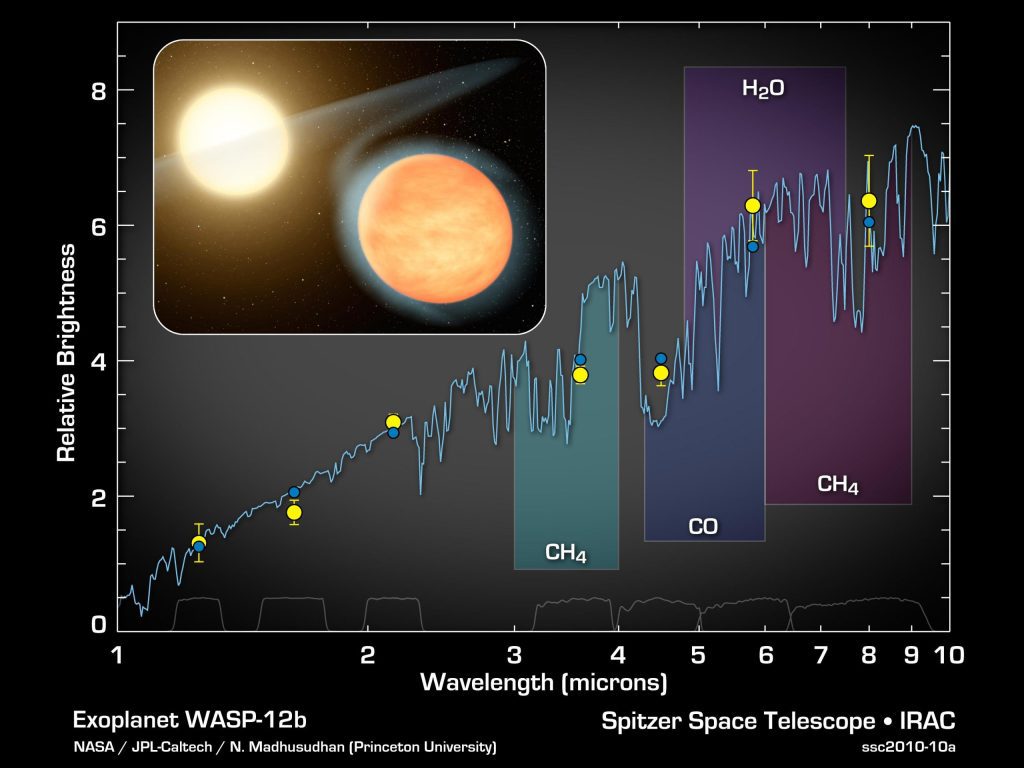
The transiting exoplanet WASP-12b is located some 870 light-years from Earth. This extremely irradiated planet orbits its Sun-like, G0 parent star in just over 26 hours, resulting in a dayside temperature of ~2,700 K (4,400 F). The tidal forces exerted by its star are sufficiently strong to distort the exoplanet into a prolate shape and cause mass loss at a rate of 1 Earth-mass every ~30,000 years. WASP-12b is the hottest planet with a measured atmospheric composition.
In the December 9th, 2010 issue of Nature, Madhusudhan et al. report that WASP-12b has a carbon-to-oxygen (C/O) ratio > 1, the first of what may be many carbon-rich exoplanets. The formation, interiors, and atmospheres of these planets are likely completely different from planets with a solar C/O ratio (~0.57). The interior of WASP-12b could be dominated by pure-carbon rocks, possibly in the form of graphite or diamonds. The atmosphere is found to have a surprising amount of methane, a key fact that supports the large C/O ratio.
The primary constituents of hot exoplanetary atmospheres are hydrogen (H2), helium (He), carbon monoxide (CO), carbon dioxide (CO2), methane (CH4), and water vapor (H2O). Assuming C/O < 1 and chemical equilibrium, we would expect to find significant amounts of CO and very little CH4 in a 2,700 K atmosphere. However, when C/O > 1, the excess carbon has no oxygen to form CO so it must form CH4instead.
The Spitzer Space Telescope observed WASP-12b as it passed behind its parent star, as seen from Earth. The Infrared Array Camera (IRAC) measured two secondary eclipse events, the first at 3.6 and 5.8 μm and the second at 4.5 and 8.0 μm. Joseph Harrington, a UCF professor and member o f the Planetary Sciences Group, is the principal investigator on this project. He and his team of graduate and undergraduate students led the Spitzer observations and data analysis portions. An associated paper on the orbit of exoplanet WASP-12bhas been submitted to ApJ by UCF undergradute student Christopher J. Campo. Three ground-based secondary eclipse measurements were also used in the atmospheric analysis.
Read more:
